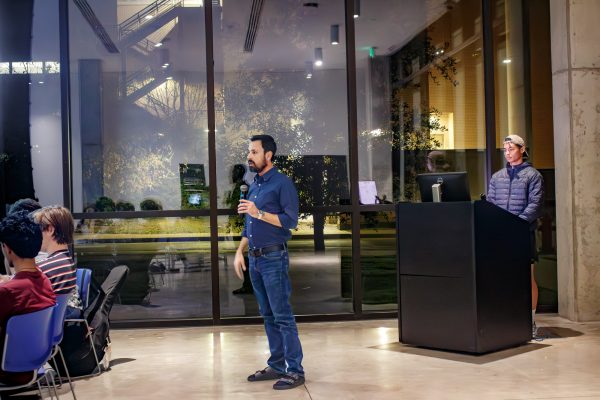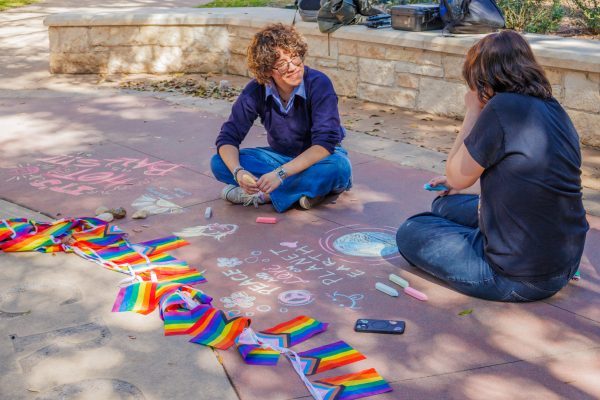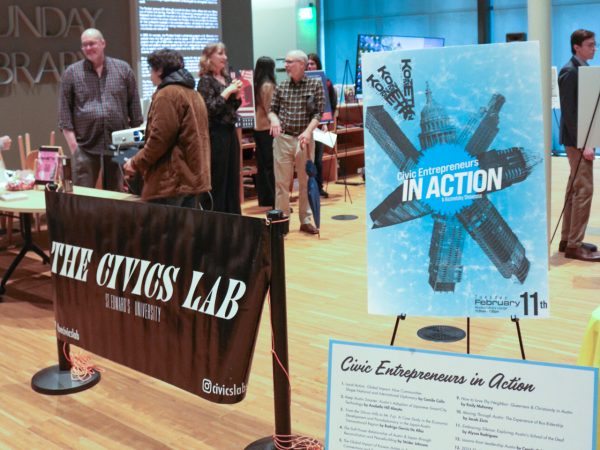Campus faculty short on racial diversity
The diversity of the St. Edward’s University student body has always been a key selling point for incoming freshmen, but statistics show students won’t find the same diversity in their professors.
St. Edward’s has been recognized for its ability to promote and maintain an ethnically diverse student body. In 2006, The New York Times named the university to its “Colleges of Many Colors” list.
The faculty, however, is a different story.
TerriLynn Varner, assistant professor of Humanities, is one of two African-American professors in the school, and one of four at the entire university. She said St. Edward’s is lacking in its representation of persons of color and knows that the university is well aware of the issue.
“While, I do believe that [St. Edward’s] is working on its commitment to significantly increase the diversity of our full- and part-time faculty, more still needs to be done,” she said. “They need to break the glass ceiling.”
The Numbers
As of November 2009, Haven Street-Allen, director of Human Resources, said 11 percent of the 187 full-time faculty at St. Edward’s were members of minority groups. Within this group of 187, 54 are tenured and of these 54, 20 are women, 15 are minorities and none are African American, Street-Allen said.
In comparison, 54.9 percent of the undergraduate population is white, while 30.4 is Hispanic, 3.9 is African American and 10.9 is other ethnicities, according to the 2009-2010 FACT Book distributed by the Office of Institutional Research.
The number of full-time minority faculty employed at St. Edward’s would have to almost quadruple to accurately reflect the diversity among the undergraduate students.
The Reaction
Sara Villanueva Dixon, an assistant professor of Hispanic heritage, said the diversity of faculty is not even close to representing the diversity of the students, especially in terms of the prominent Hispanic and Latino student population.
Dixon said the mentor relationship between professors and students is influential in both the success and retention of students. She said it is important for students to have faculty that they can communicate with and relate to, and questioned whether the current faculty are able to provide enough resources for students.
Street-Allen said the university does not have a diversity quota in place, as some federal courts have found that such processes actually constitute reverse discrimination, but there is a general commitment to hire faculty with whom the diverse student population can identify.
The diversity percentages have fluctuated over the years, Street-Allen said, but because St. Edward’s has a comparatively small population to start, it takes only a couple of people to change the statistics.
Dixon suggested the university should specifically address the issue through a university-wide committee.
“[A committee] would be able to be creative in terms of our hiring and recruitment process and figure out ways to achieve our goal,” she said.
Recruitment and Hiring
Sr. Donna Jurick, executive vice president and provost, said that she suspected that the university might never have a faculty that exactly reflects the diversity of the student body.
“We wish we could do better, but it’s very difficult,” Jurick said. “I think we are trying very hard. We’re all interested and we’re all conscious of it.”
She said numerous committees have informally looked at the issue over the years.
St. Edward’s is currently looking to fill several faculty positions and a dean position.
Every school within the university conducts its own hiring practices in partnership with Human Resources, Street-Allen said.
HR first announces job openings on the university’s Web site, in the Chronicle of Higher Education and in other discipline-specific journals. Street-Allen said HR makes every effort to show that St. Edward’s offers equal opportunities and is interested in recruiting minority applicants.
Jurick said one of the ways St. Edward’s has been the most successful in hiring minority faculty is through maintaining close connections with post-doctorate researchers and adjunct professors.
“They know us and they want to be here,” she said. “Those are situations in which [President] Martin and I are very supportive.”
Varner said she started at St. Edward’s as an adjunct professor and was later offered a full-time position. She agreed that this is an ideal way to recruit minority faculty.
HR also provides each school an extensive kit that guides search committees through hiring and includes faculty applications, a booklet of interview guidelines and best practices.
Most of the school deans follow the kit almost exactly, but each also adopts their own practices for further evaluating applicants.
Marsha Kelliher, dean of the School of Management and Business, said the campus visits are the most telling about how candidates will react in the classroom and fit within St. Edward’s.
Overall, Jurick said St. Edward’s needs to remain legitimate in its hiring process, and should only hire when a position is necessary. She said that the university would never hire a minority for the sake of hiring a minority.
“We want to hire someone because they are a good teacher, not because they are a minority,” she said. “Either way, you have to be even-handed in hiring. And you must hire in accord with what the school needs and with the particular position.”
Dixon said increasing diversity is a challenge, but she thinks that there are ways to go about it without compromising laws, ethics or values.
“Of course, first and foremost we want to hire trained and qualified faculty,” she said. “But I think diversifying needs to become a priority.”
Cynthia Naples, dean of the School of Natural Sciences, said the school follows the law, tries to be fair to all applicants and find the best fit.
The Competition Issue
One of the contributing factors to the limited diversity at St. Edward’s is the institution’s focus on teaching and advising. Because St. Edward’s is small and strives to recruit professors who prefer teaching to research, the school deans said many applicants are lost to research institutions. In most cases, top-tiered research-based institutions are able to offer lighter teaching loads, more opportunities to pursue research and more financial support.
Brenda Vallance, dean of the School of Behavioral and Social Sciences, said it is not the hiring processes at St. Edward’s that are the problem, but rather, the small initial applicant pools that lack diversity.
“We are all running after scarce resources in ethnically diverse Ph.D.s,” she said.
Many of the deans noted that the faculty qualification for a Ph.D. degree eliminates many minority candidates because there are not as many minorities receiving Ph.D.s. Street-Allen said that within the total number of those who received Ph.D.s in 2009, only 9.6 percent were of African American and Hispanic descent.
Dixon said minority students are still underrepresented on college campuses. She said that the differences in available opportunities, socioeconomic status, incomes and family expectations all potentially influence how many minority students are able to pursue bachelor’s, master’s and doctorate degrees.
Jurick said St. Edward’s supports the McNair Scholarship program because it seeks to increase the number of minority students able to pursue higher education and thus, give them the opportunity to enter the job market with these degrees.
St. Edward’s is not the only institution that struggles with faculty diversity either. A study in January at the Massachusetts Institute of Technology pointed to a significant need to increase the number of African-American and Hispanic professors in science and math departments.
The study said faculty diversity is an issue that stretches across college campuses, and a number of other universities have reported similar findings at their own respective institutions.
The Next Step
Jurick said every dean is conscious of and encouraged to look at the issue.
“Some disciplines are better at recruiting than others,” she said, “but I think we are all trying very hard.”
While the university has a legal obligation to consider every applicant equally, regardless of gender or ethnicity, Varner and some of her colleagues feel they also have an obligation to ensure that students at St. Edward’s feel comfortable and that they can relate to the faculty that facilitate their education.
Fr. Lou Brusatti, dean of Humanities, said he agrees and that the issue is at the front of his mind. Moving forward, he said he would like his department to better reflect the student body.
“Diversity reflects the reality of what the United States is these days,” Brusatti said. “It’s an opportunity to hear other conversations in the world.”[email protected]






